
Goodbye, Little Sheba
On Sunday morning, November 24, 1963, Dallas nightclub owner and Mob flunky Jack Ruby drove his car to a Western Union office to send $25 to Fort Worth to Karen Bennett Carlin, a stripper at Ruby's Carousel Club. Ruby allegedly brought his beloved dog Sheba along, having told his roommate he was taking Sheba, a dachsund, to the club where his other dogs were. (The unmarried Ruby called Sheba his "wife"; the other dogs were his "children.") 1 But after completing the money order at 11:17 a.m., Ruby, leaving Sheba in the car, walked one block to the Dallas Police Department. There accused JFK assassin Lee Harvey Oswald was about to be brought out through the DPD basement for transfer to the county jail. In the basement Ruby fatally shot Oswald at 11:21 a.m. on national television.

COINCIDENCE OR CONSPIRACY?
Warren Commission apologists (also known as "lone nutters") argue that Ruby just happened to be in the area on his money errand, and shot Oswald on the spur of the moment. It was not for any conspiratorial reason such as the Mob or someone else ordering Ruby to silence him. But is coincidence really the likely explanation for Ruby showing up at DPD, where (we are supposed to believe) he spontaneously whipped out his snub-nose pistol and killed Oswald (making Ruby a second lone nut, Oswald being the first, in the JFK case), because he was mad at Oswald and felt sorry for JFK's widow? 2
Lone nutters such as the late Gerald Ford, former Warren Commission member and U.S. president, like to point out that Oswald's transfer was delayed that morning, due to a lengthy interrogation that included questions by postal inspector Harry D. Holmes. Had it not been for this unforeseeable delay, they argue, Oswald would have been gone before Ruby happened on the scene, so nothing was timed, Ruby's stopping by just as Oswald was being transferred was a coincidence. 3
Postal inspector Holmes testified to the Warren Commission that he was on his way to church that morning when he decided instead to go help his friend Capt. Will Fritz of DPD Homicide interrogate Oswald. 4 (If a postal inspector interrogating an accused presidential assassin wasn't enough as a first, Holmes also had the distinction of being the only known person to watch the JFK shooting through binoculars.) 5 The theory that Ruby and Oswald coincidentally converged, thanks to Holmes not going to church, of course assumes no conspiracy. But Ruby openly suggested to the Warren Commission that he was involved somehow in a plot against JFK. He begged commissioners Earl Warren and Gerald Ford, interviewing him in Dallas, to take him to Washington so he could talk. "I want to tell the truth," Ruby told them, "but I can't tell it here. Does that make sense to you?" He said, "I was used for a purpose" (reminiscent of Oswald's "I'm just a patsy" statement in jail). 6 Ruby's plea fell on deaf ears.
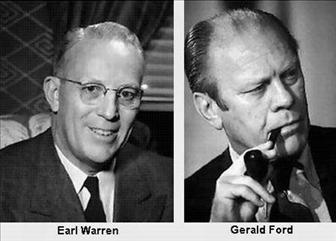
But what if Ruby had indeed been involved in a conspiracy? It would then seem probable that the questioning of Oswald on that fateful Sunday morning was calculatingly continued (with Holmes's participation being a convenient way to lengthen it) till Ruby arrived in the basement. A signal that Ruby was in place would then end the interrogation, and soon end Oswald's life. Coincidence had nothing to do with it.
Not so, lone nutters will say, for the delayed-transfer angle is not the only coincidental aspect of the convergence of Oswald and Ruby. There is also the money order. If one of his strippers hadn't called him to ask for some money, Ruby could have still been at home that morning playing with his favorite gal Sheba.
Yes, that sounds reasonable. But again, if we posit a conspiracy, is it not possible that it was prearranged for Carlin to call Ruby, to give him an excuse to be one block from DPD as Oswald was about to be transferred? Or is it not possible, indeed more likely, that Carlin's request was indeed a coincidence, and totally inconsequential? Ruby was going to DPD that morning whether he had to send money to Carlin or not. And no Oswald transfer was going to begin till Ruby got there and was in place, whether he went first to Western Union or not.
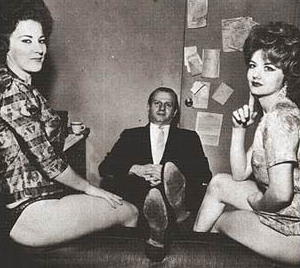
When Secret Service agent Roger C. Warner interviewed Carlin later that day, in Warner's words she "twisted in her chair, stammered in her speech, and seemed on the point of hysteria." She told Warner, according to his Warren Commission affidavit, that she was "under the impression" that Oswald, Ruby, and others unknown to her were "involved in a plot to assassinate President Kennedy and that she would be killed if she gave any information to the authorities." 7 She later calmed down in the interview and said "she had no information in her possession" that Ruby was involved in a conspiracy, but she asked that all she related "be kept confidential to prevent retaliation against her in case there was a plot afoot." 8 Months later she testified to the Warren Commission that she called Ruby around 10 o'clock that morning to ask for money for rent and groceries. She also testified that she thought Ruby "had connections with Lee Harvey Oswald," but she insisted there was "nothing to base it on, except my own opinion." 9
Not long after her testimony, Karen Carlin disappeared. 10
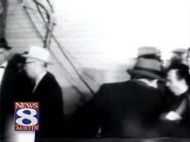
Ah, say lone nutters, but there's still Ruby's dog. If Ruby went to Western Union, then to DPD, with the premeditated intention of killing Oswald, would he have taken beloved Sheba along, to leave her shut up in the car while he would be going to jail? One would certainly not think so. As Michael Zezima has argued, "Sheba may do more than the testimony of 552 witnesses to dispel one of this nation's most powerful and enduring myths," that there was a JFK conspiracy, in which Oswald and Ruby were somehow involved. 11
But Sheba actually may do just the opposite. If we assume that Ruby was ordered to silence Oswald, perhaps he was also told to take Sheba along, as convincing evidence that he left home that day, his dear pet in tow, with no intent to kill anyone. Of course Ruby may have thought of this on his own. Or perhaps he took Sheba for a mishmash of reasons: his attachment to the dog, indecision, a measure of denial about what lay ahead, a desperate hope that his mission might somehow be aborted.
Is there actual evidence that Ruby may have been told to take Sheba? Did something happen, did Ruby do anything peculiar, that at least indicates he knew that he would not be returning to the car, even though he had put Sheba in it? Yes, and the evidence is right there in the Warren Commission Report.
KEYS TO THE MYSTERY
The official story is that Ruby took Sheba with him in his white 1960 Oldsmobile that morning, parking the car in the All State Parking lot at 2035 Main Street, directly across from the Western Union office. He put his keys in the trunk of the car, then locked the trunk, which contained almost $900 in cash, and placed the trunk key and his billfold in the glove compartment. (The report erroneously states that he put the billfold in the trunk.) "He did not lock the car doors." 12
Now does that make any sense? Instead of keeping his keys and billfold in his pockets as anyone would normally do, for some reason he locks the keys in the trunk of the car, then puts the trunk key and his billfold in the unlocked glove compartment, and doesn't lock the car doors.
Carrying almost a grand in cash was a good alibi for also carrying a gun. 13 But having locked up the cash, why pack a concealed weapon, for which he had no license, to the police station, unless he was planning to use it? Also, one would expect a guy carrying his dog to his closed nightclub on a Sunday morning to be rather casually dressed. Yet Ruby went to DPD, supposedly on a spur-of-the-moment visit, "dressed like a detective." 14
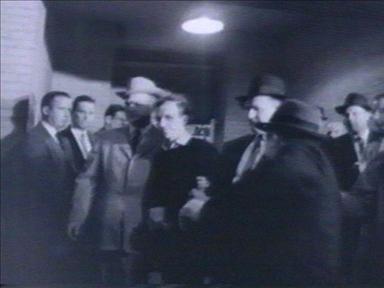
Naturally Ruby would not want to leave Sheba locked up in the car if he knew he wasn't returning. One should never leave a pet locked up in a car, of course, due to the heat factor. 15 But it was cool that late November morning, with Oswald given a sweater to wear for his transfer. 16 So perhaps Ruby felt confident that Sheba would be safe in the car for a reasonably short time. (It would be over two hours, the car being impounded at 1:30 p.m.) So Ruby left the doors unlocked, to be certain, once his mission was quickly accomplished, that someone from DPD, or some Good Samaritan, could easily rescue Sheba. And that person would know, by the IDs in the conveniently left billfold, to whom the dog belonged.
Sure enough, according to the record, DPD sent Lt. Vernon S. Smart, a detective in the Auto Theft Division, to search Ruby's car, get the money out of it, impound the car, and send the dog in the car to an animal shelter. Sheba reportedly wound up in the care of Ruby employee Andrew Armstrong, Jr. 17
A SHAGGY DOG STORY?
Is the official record about Ruby and his dog truthful? We must now consider evidence for the real possibility that Ruby did not leave his beloved dog Sheba in the car because Sheba was not in the car to begin with. We must ask if the Sheba story was concocted, with people told what to say, to support the notion that Ruby did not plan to shoot Oswald but acted spontaneously after walking one block to the DPD basement.
His roommate George Senator testified that when Ruby left the apartment that morning, he said, "George, I am taking the dog down to the club." 18 But how trustworthy a witness was Senator? He testified that he couldn't remember a meeting that he had that night in the apartment with attorney Tom Howard and two reporters. Howard and the two reporters were all three dead by 1965. So if certain people were told to tell a dog story about Ruby, Senator may have been the easiest to intimidate. He also said that Ruby was at the apartment until about 10:30 a.m. But John Allison Smith, a video operator for WBAP-TV in Dallas, told the FBI and Warren Commission that he saw Ruby standing on the sidewalk on the Commerce Street side of DPD about 8:00 a.m. that morning, and again about 10:00 a.m. Smith said that Ruby came over to the truck at one point and asked, "Have they brought Oswald down yet?" 19
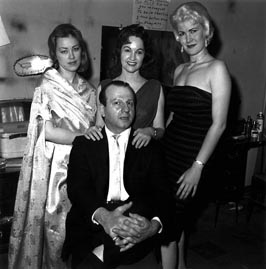
Thomas Donald McMillon, a detective in Auto Theft, told the Warren Commission that "one of the lieutenants" told him to take Ruby's keys (did Ruby have a set besides the one in the trunk?) and go meet Smart and another detective (Lt. Swain) to check out Ruby's car. (The car was already gone when McMillon got there.) "It came up in the conversation some way," McMillon testified, "that he had a dog in the car." When asked how that came up, McMillon said, "I don't remember that, but maybe Jack asked us to take care of his dog or something. I don't know." 22
Of particular importance is the testimony of Auto Theft detective Barnard S. Clardy. Clardy testified that after Ruby was arrested and searched, Clardy and detectives McMillon and Archer stayed with Ruby until he was escorted to the Homicide Bureau about 2:30 p.m. When asked if Ruby said anything about a dog being in his car during Clardy's approximately three hours with him, Clardy testified, "I recall that he said there was some money in the car. I don't recall him saying it in my presence, about the dog being in it." 23
So with regard to the question, who at DPD first knew there was a dog in the car and how did they know, the answer is: nobody seemed to know. Nor did anyone personally recall Ruby making any mention of a dog in his car.
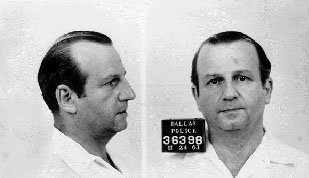
Now back to Lt. Smart. If we are to believe his account of searching Ruby's car, Sheba was one strange-acting dog. When Smart looked in the glove compartment and found Ruby's wallet and a key, he was not even aware of where the dog was. Smart told the FBI that there were three Dallas newspapers lying on the front seat, all having articles in them about the assassination. In his Warren Commission testimony, Smart said, "I sat down in the front seat to try this key (in the ignition), and I put my hand down on these papers, and that is when I felt the dog. The dog raised up." 24 Would it not be unusual for a dog left in a car to behave as Sheba allegedly did, not keeping watch for her master's return but lying unperturbed under newspaper or anything else after two hours of rising temperature, and when a stranger has gotten in and is searching the car? And how was Sheba so well hidden under some newspapers on the front seat that Smart, having been told there was a dog in the car, didn't know where the dog was? How many places were there to look in Ruby's two-door sedan?
Does this story seem too unlikely for Smart to have made it up? Perhaps, unless Smart, if he had been told to lie about a dog being there, was sending a message by making up the most unlikely story about the dog that he could think of.
Then there's the parking lot attendant's story. Testifying before the Warren Commission, attendant Theodore Jackson didn't seem too sure of himself at first when asked if there was a dog in the car: "Yes, sir; I think so. It was--yes, it was a dog in the car." 25
Now Jackson should have expected a question about the dog, whether there was indeed a dog in the car or whether he had been told to say that there was. Yet he vacillated for some reason when asked the question. After that, he talked freely about a dog being in the car, as if getting in the groove about what he was supposed to say. It is quite possible, as researcher Greg Parker has noted, that someone slipped Sheba into the car after Ruby headed for the DPD. If Jackson saw that happen, is that why he faltered momentarily when asked if a dog was in the car? Researcher Tony Austin has theorized that Ruby's roommate or someone else switched dogs for Ruby, replacing Sheba in the car with one of her offspring from the club, to spare Sheba a trip to the dog pound (thus Ruby's seeming lack of concern about Sheba after his arrest). 26 Could Jackson have witnessed such a switch, giving him pause in his testimony?
And then there's Jackson's statement to the Commission that the dog was still in the car when it was towed away. This was corroborated by attendant John L. Daniels, who was working in Norton's Auto Park next door. Daniels told the Commission that the detectives "decided they'd take the car on down to the pound" and "take the dog with them." 27 Yet when Smart was asked during his Commission testimony, "And what did you do with the dog when you got in (the car)?", the detective replied, "We had the squad come by and get it and take it to the animal shelter." 28 So which was it, did Smart have the dog picked up by "the squad" as he testified, or (disobeying orders and then lying about it) did he have the dog towed away with the car?
Finally there is the question of where the dog was taken, and who then retrieved her. Andrew Armstrong Jr., a 27-year-old Carousel employee whom Ruby referred to as "the colored boy," fed Ruby's dogs at the club every day. 29 Armstrong told the Warren Commission of visiting Ruby in jail, and said, "The first time I went to see him I asked him where were Sheba and he told me he had left her in the automobile and later on, so he told me, to contact the pound, to see if the pound had Sheba . . . so I called the pound and the pound said that they had her, and Joy Dale went out and picked her up and brought her to the club" (emphasis added). 30

Joy Dale was the stage name of Carousel stripper Joyce McDonald. But McDonald later told researcher Gary Mack that she had no recollection of going to the animal shelter and getting Sheba and thought that Armstrong must have gotten her. 31 Well sure enough, here is what Armstrong told the House Select Committee on Assassinations, in spite of what he told the Warren Commission:
Q. Where was Sheba after Oswald was shot?
A. Now, that's another thing that I don't--where was Sheba after Oswald was shot? Now, I am told that Sheba was in the car. Now, I remember going and getting Sheba, and I don't remember whether I went to the police station and got Sheba or whether I went to the Carousel (sic) and got Sheba, but I remember going and getting Sheba (emphasis added). 32
CONCLUSION
The description by the clerk of Ruby's departure from the Western Union office can be seen as almost poignant, insofar as one can feel any sympathy for Jack Ruby. It is perhaps a good way to end this doggone inquiry. After completing the money order, clerk Doyle Lane said that Ruby walked out the door and proceeded in the direction of DPD. 33 Ruby didn't first go back to the car or head toward it, but went straight toward the place of Oswald's impending execution. Perhaps Ruby felt he had already taken too long. Perhaps he wanted to just get it over with. And perhaps he didn't have the heart to go back to the car first and say, "Goodbye, Little Sheba." (If in fact it was Sheba and not one of her puppies.) Or perhaps--and at this point we will probably never know--there wasn't any dog in the car.
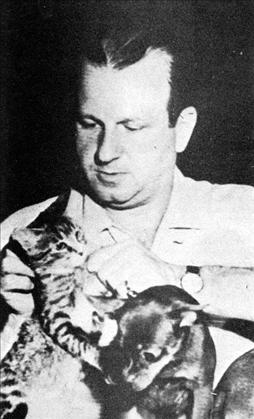
Footnotes:
1. Seth Kantor, The Ruby Cover-Up (New York: Zebra, 1978), pp. 329-332; George Senator, Warren Commission testimony, XIV:194-196.
2. In Ruby's trial, DPD Sgt. Patrick T. Dean testified that Ruby had told him under questioning that he had first thought about killing Oswald on the night of November 22. But Secret Service agent Forrest Sorrels, who was present when Dean questioned Ruby, insisted that Ruby made no such admission. Sorrels was not called to testify. (Kantor, pp. 223, 242-243.) As for the story that Ruby killed Oswald to spare Jackie Kennedy a return trip to Dallas for Oswald's trial, Ruby told his trial lawyer Joe Tonahill that his first lawyer, Tom Howard, had told him to say that (Kantor, pp. 129-130). (Ruby was sentenced to death in the electric chair, but died of cancer in 1967, about a month before a new trial was to begin.)
3. Gerald R. Ford and David W. Belin, "Commercial Productions Repeat 'Big Lie'," Gainesville (FL) Sun, December 22, 1991.
4. Harry D. Holmes, WC testimony, VII:296; Ford and Belin.
5. Ian Griggs, "The Four Faces of Harry D. Holmes," November in Dallas Conference, 1997. (http://www.jfklancer.com/Holmes.html)
6. Jim Marrs, Crossfire: The Plot that Killed Kennedy (New York: Carroll and Graf, 1989), pp. 427-428; Kantor, p. 49.
7. Roger C. Warner, WC affidavit, XV:619-620.
8. Ibid.
9. Mrs. Bruce Carlin, WC testimony, XIII:211, XV:659.
10. Noel Twyman, Bloody Treason (Rancho Santa Fe, CA: Laurel Publishing, 1997), p. 277; Harrison Edward Livingstone, High Treason 2 (New York: Carroll and Graf, 1992), p. 84. See DPD missing person report, dated 2/2/64.
11. Michael Zezima, "Jack Ruby's Dog," The Konformist, May 2001. (http://www.konformist.com/jfkland/jack-rubys-dog.htm)
12. Warren Commission Report, p. 354. On the location of the billfold, see Vernon S. Smart, FBI statement (WC Exhibit 5021, XXI:523-527), and WC testimony, XIII:271-276.
13. Kantor, p. 133.
14. Ibid., p. 134.
15. "Never leave your pet unattended in a parked car for any period of time. On a warm day, the temperature in a parked car can reach 120 degrees F in a matter of minutes--even with the car windows partially open. Your pet can quickly suffer brain damage or die from heatstroke or suffocation when trapped in high temperatures" (www.petloveshack.com; quoted by Greg Parker in "Ruby and his dogs," The Education Forum, 12/1/04).
16. Holmes.
17. Smart; Andrew Armstrong, Jr., HSCA testimony, IX:262.
18. Senator.
19. John Allison Smith, WC XIII:277-284, XXI:530-531.
20. Smart, FBI statement.
21. M.W. Stevenson, WC testimony, XII:105.
22. Thomas Donald McMillon, WC testimony, XIII:51.
23. Barnard S. Clardy, WC testimony, XII:403-414; Clardy report to Chief of Police J.E. Curry, 11/27/63 (WC XIX, Clardy Exhibit No. 5061); FBI report, 3/24/64 (WC XIX, Clardy Exhibit No. 5062). Thanks to Tony Austin for drawing my attention to Clardy.
24. Smart, FBI statement and WC testimony.
25. Theodore Jackson, WC testimony, XIII:299-302.
26. Tony Austin, "The Tale of Jack Ruby's Dog," The Education Forum, May 15, 2007.
27. John L. Daniels, WC testimony, XIII:296-299.
28. Smart, WC testimony.
29. Kantor, p. 90; Jackson, WC testimony.
30. Andrew Armstrong Jr., WC testimony, XIII:354-355.
31. Gary Mack, 12/1/04 e-mail to author.
32. Andrew Armstrong Jr., HSCA testimony, IX:262.
33. WC Report, p. 357; Kantor, p. 139.
Other JFK articles:
Copyright 2004, 2007 by Ronald L. Ecker
Contact:
hobrad at outlook dot com
dragonswood at comcast dot net
Top of Page | The Ron Ecker Home Page